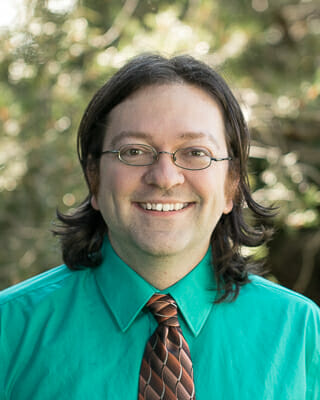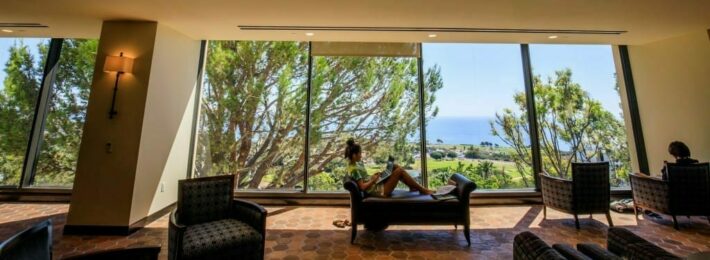
Among the more fascinating library revitalization projects we have seen recently, one that stands out is Payson Library at Pepperdine University. As we took a closer look, we realized that much of the thinking that informs the Payson Library renovation is replicable and scalable for other institutions, even institutions with quite small library facilities.
To learn more about this fascinating project, I interviewed Mark Roosa, Dean of Libraries at Pepperdine. Here is what Mark shared with us.
(And you can see the Payson Library yourself—with both a tour and learning activities—during a site visit at our upcoming conference.)
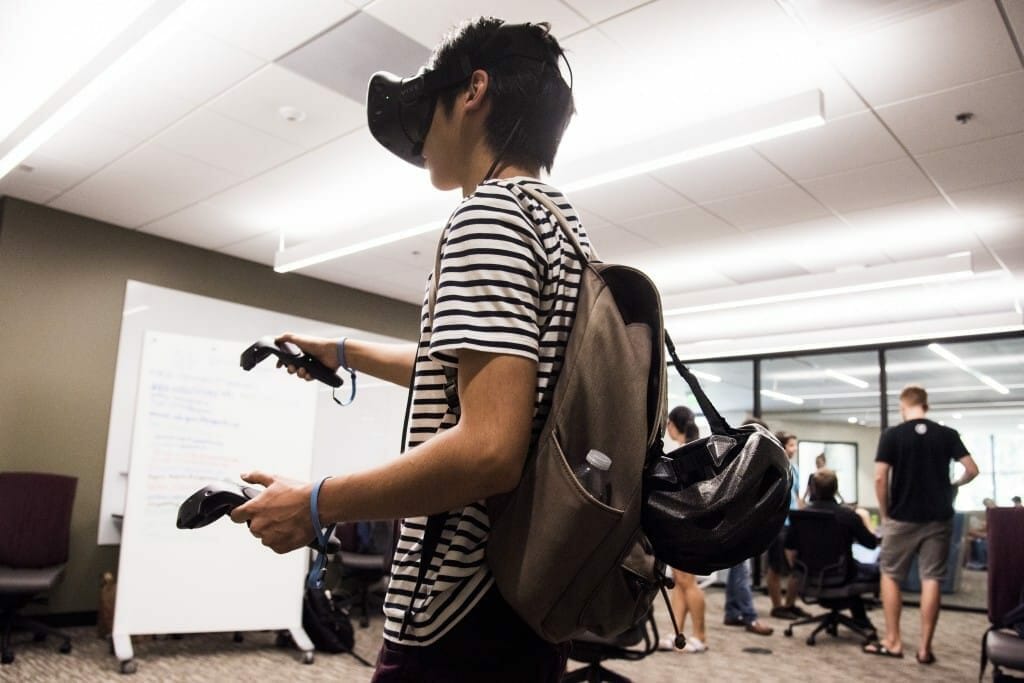
The Genesis Lab makerspace at Payson Library. Image property of Pepperdine University.
An Interview with Mark Roosa
Daniel Fusch, Academic Impressions: Mark, thanks for joining me. First, what was the guiding philosophy behind this renovation?
Mark Roosa, Pepperdine University: There were three drivers for the renovation:
- We needed to create more study, learning, and research space in the library. Put simply, our library space was cramped. It was a nice-looking building but not terribly “user-friendly.”
- Additionally, the building itself was one of the oldest on campus, dating back to 1970. The facility was showing its age, and the infrastructure was deteriorating badly. We were constantly having to provide band-aid fixes on the building. It was time to get into the walls and replace the electrical and the plumbing.
- Finally, we wanted to create a more visionary learning space. We wanted to define what impactful spaces for our students would be, and examine how the academic library can support both emerging academic trends and social formation on campus.
Daniel Fusch. In light of that, could you tell me about the study spaces and “living” rooms throughout the library? What is unique about their design and placement, and what drove the decision to approach them in this way?
Mark Roosa. We made a tactical decision early on to remove some of the stacks to permit room for some of these new types of learning spaces. We have a satellite facility where we can store and provide access to those collections that were removed. The whole collection is still available and will soon be searchable via a virtual browsing tool we are developing.
We knew we were creating more usable space. But anyone can do that: a lot of libraries are “clear cutting” and putting in chairs and workstations and creative-looking furniture. We wanted to do more than that. In our own research through focus groups with students, interviews with our faculty, and interviews with external faculty, we saw that there is a blurring between the library and the dorm experience, between the library and the café. Students tend to do similar activities in all three of those spaces. It is a domestication of library spaces, where learners crave study spaces that resemble the living room. This is a departure from the old perspective that a library ought to be a formal space that accommodates a specific kind of learning and a specific kind of behavior.
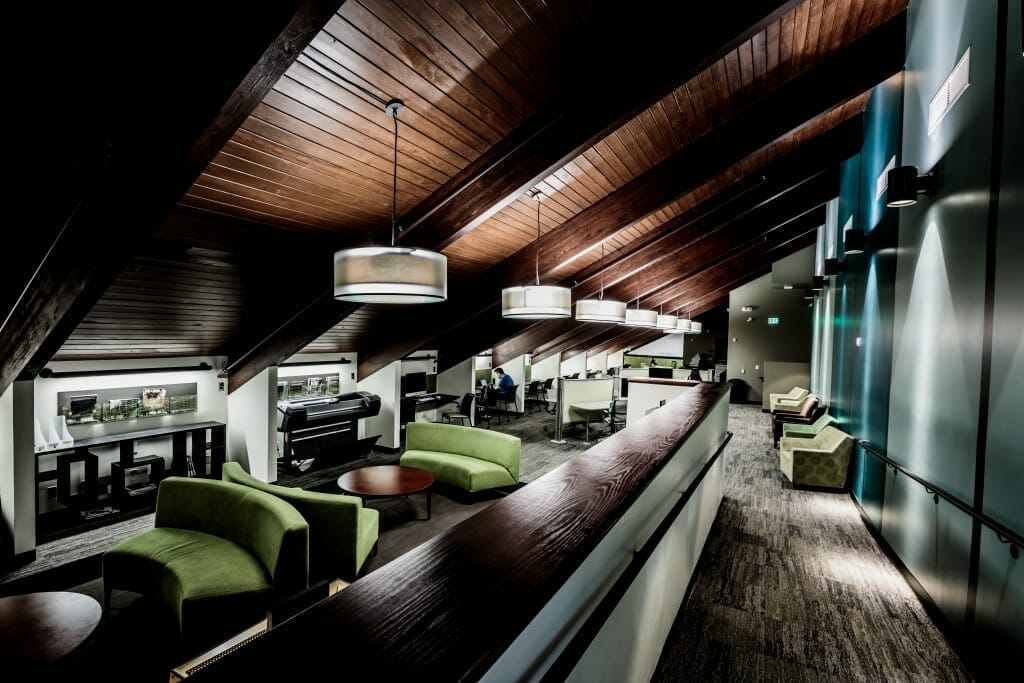
The Academic Center for Excellence at Payson Library, where academic support services are available to students. Image property of Pepperdine University.
We’ve created “living rooms” in the library: spaces with couches, softer seating, fireplaces—where students can go and plop down. That “plopping down” is important. The library has become a place where students go with some intentionality to rest, to check their phone, to read.
Daniel Fusch: I am thinking right now of my personal library in my home, with my rugs and papasan chairs…
Mark Roosa: Yes. Students want to come to the library and find their “own spot.” We find our own favorite spots; we are creatures of habit. In this library, we’re encouraging that behavior. There are all kinds of nooks and crannies in this library where students can find their spot. We’ve tried to create interesting “spots.” We have nicely appointed, contemporary-in-feel study spaces, with glass whiteboards and glassed walls. People can see in, people can see out; today’s students like to be seen, and they like to see in. This was very important in our focus groups. Also, on a practical level, students like to be able to see into study spaces to see if they’re occupied.
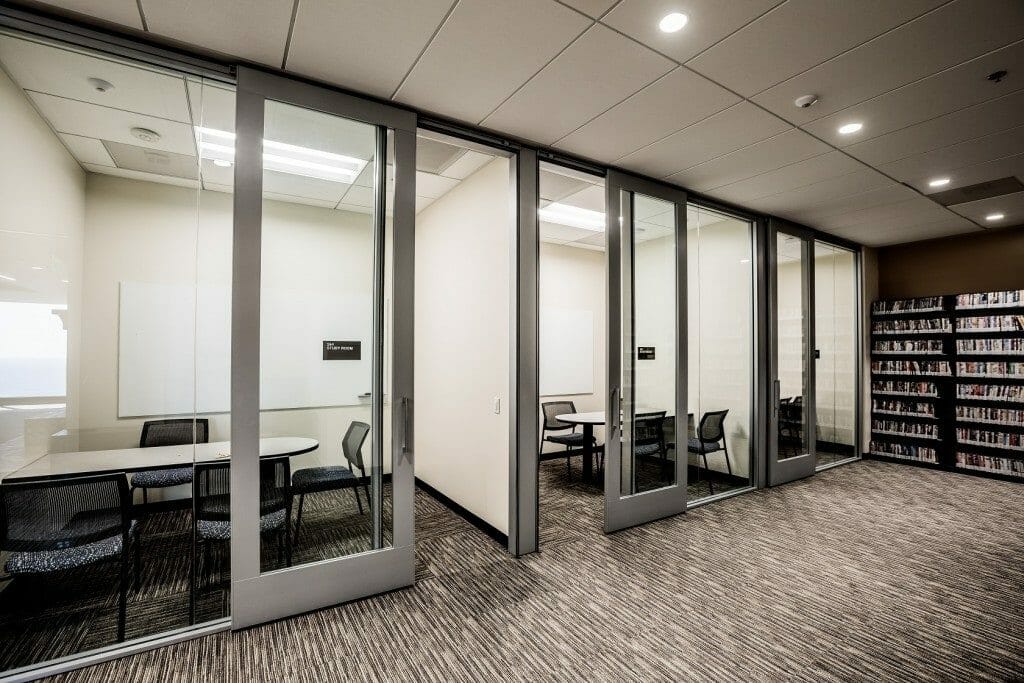
Glassed study rooms at Payson Library. Image property of Pepperdine University.
In between the study space and the “living room,” there is a space in the midst of the stacks: a room within a room. When we were laying out the design, I said to architects, it would be nice to see a space carved out where you would be surrounded by books. This would be a more intimate space. It’s a room built in the midst of the stacks; it is very quiet. There isn’t any signage requiring that quiet; people just expect it to be quiet, and so it is.
Daniel Fusch: So the design encourages certain activities naturally in certain spaces.
Mark Roosa: Exactly. Also, students are self-policing when it comes to noisy customers. And in general, people are respectful of each other’s desire to be in the library for specific reasons.
So those are 3 areas—the living room, the glassed study room, and the room within the stacks. We have a fourth kind of space, too. In the focus groups, I asked the students, “Where do you go study?”
They said, “We go to Malibu to the Starbucks there.”
So we installed, at the front entrance of the library, a Starbucks the same size as the one in Malibu, and it opens into the library. Now when students come to have the Starbucks experience and hang out with friends, they move into the library after purchasing their coffee. This makes sense; think about how cafes in Europe have always been where people go to exchange ideas.
Daniel Fusch: The salons in Paris…
Mark Roosa: Exactly. Certainly putting a café inside the library is one way to do it, but we thought putting the cafe on the edge of the library could provide students with a threshold to the library. People come to have that social experience, and then they cross the threshold into the library proper, and their behavior shifts naturally from the Starbucks experience to the library experience. There is no need to walk through another door from the café; you just walk into the open space and find a booth or a seat. You see everyone working, and you think, “Maybe I should too.” We’re watching that gray transition area with great interest.
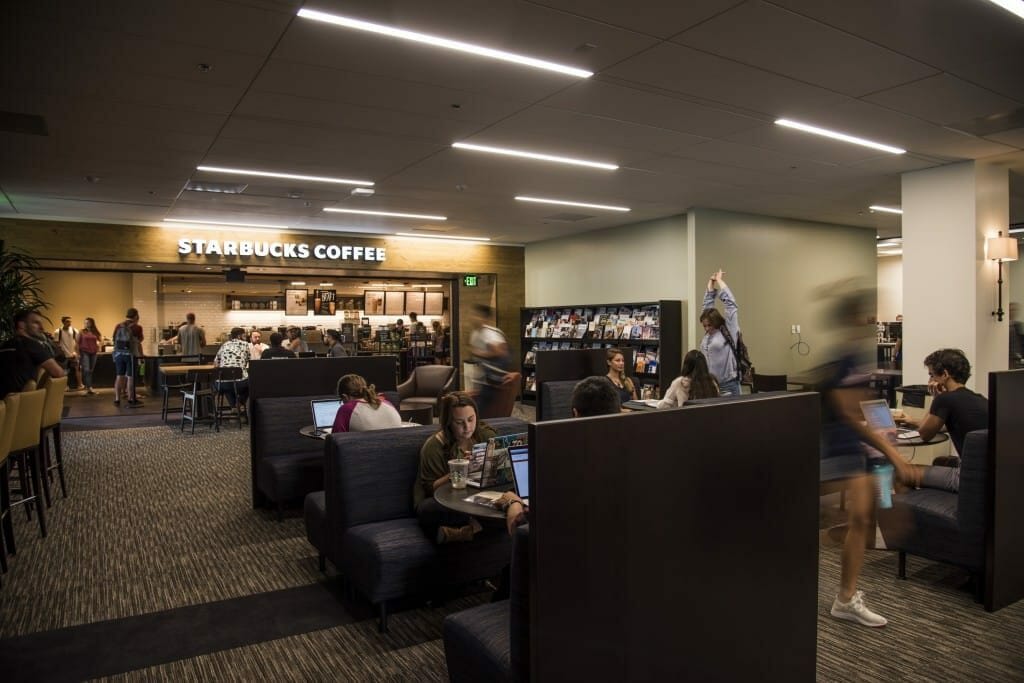
The Starbucks entrance at Payson Library. Image property of Pepperdine University.
Daniel Fusch: Mark, this approach is fascinating. Can you share any stats or anecdotes about the impact of the new library?
Mark Roosa: Yes. First, I can point to the Starbucks Effect. That café has increased visitorship by 10 times.
Second, I’d point to the impact on social formation—and our own social capital on campus. Let me give you an example. Our new Special Collections wing isn’t locked up. It is an entire wing organized around three themes: Explore, Discover, and Create. The wing features exhibits on each of those three. We have seen a 200-300% increase in classes that faculty hold in Special Collections. Faculty are now approaching us, asking us to help their classes work with the original materials. We had 30 classes this fall use the manuscripts there.
Part of this is the new space, and part of it is the change in thinking about the way that Special Collections can contribute to the student experience.
Daniel Fusch: Can you tell me more about that change in thinking?
Mark Roosa: Special Collections used to be intimidating for a first or second-year student. We wanted an experience in which from the moment the student arrives, there are no barriers to exploration. We wanted to send the message that this is a place for inquiry and discovery, a place to learn more. There are no doors—just an open entrance to the wing.
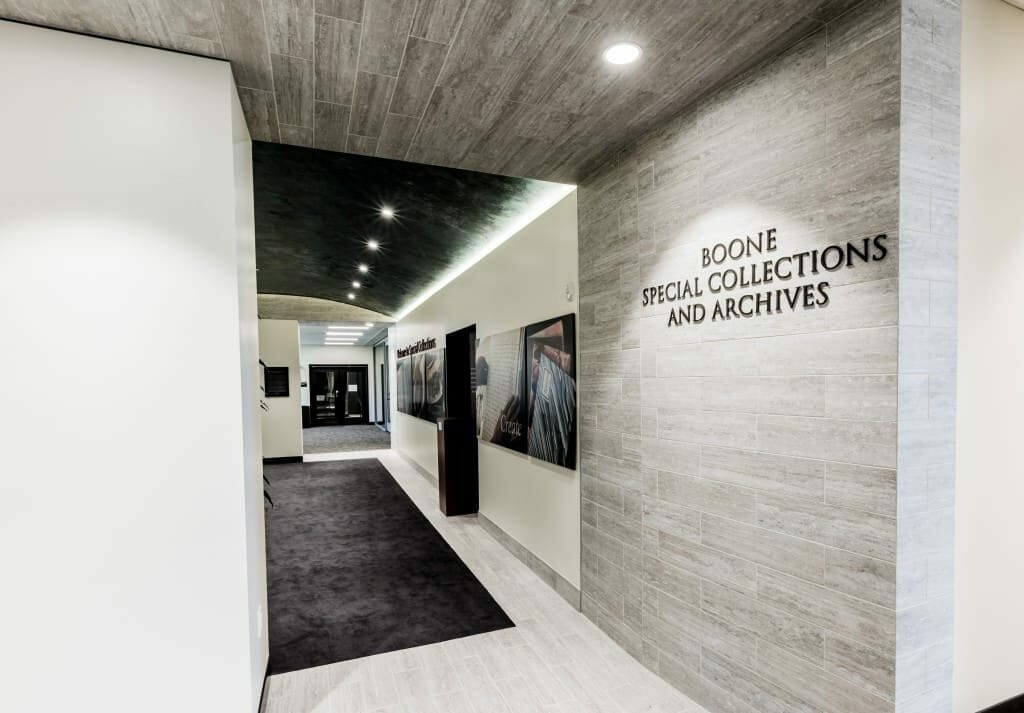
Special Collections at Payson Library. Image property of Pepperdine University.
And we used the concept of progressive immersion to guide the wing’s design and programming. You get the Explore/Discover/Create exhibits that feature samples of what’s in Special Collections. Then, as you progress further into the space, you find more: a Heritage Area, a glassed-in reading room, a glassed-in lab. You see classes being held. Last but not least, there is a big meetup space called the Surfboard Room, where we have a collection of historic surf boards, showcasing local culture. That’s where we do a lot of our public programming—everything from book talks by local authors to guitar recitals, to dinners with the regents.
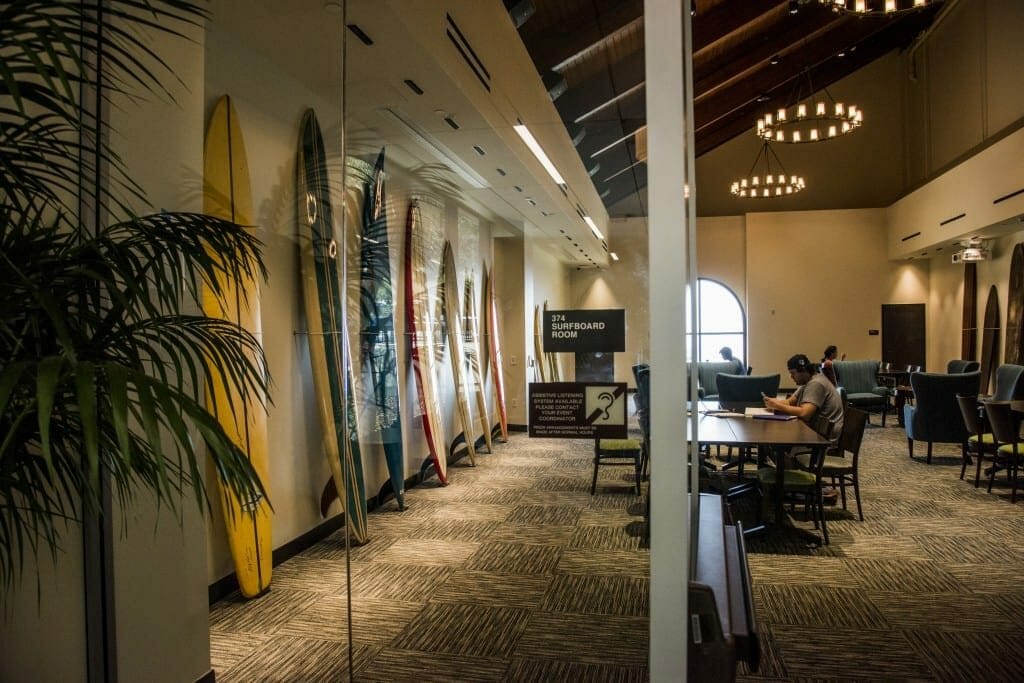
The Surfboard Room at Payson Library. Image property of Pepperdine University.
The idea is to expose students to the range of learning and social possibilities, and put them in touch directly with original materials.
Daniel Fusch: Mark, I am struck by the fact that there is still a “traditional” feel to many spaces in this very nontraditional library, like the Great Books Room … but it’s a very user-friendly space, too.
Mark Roosa: I think the key with the Great Books Room is that it is glassed. Students can look in and see others deliberating about great books around an oval table, or participating in mentor-led discussions. And they see that this is a part of the experience they can have at college.
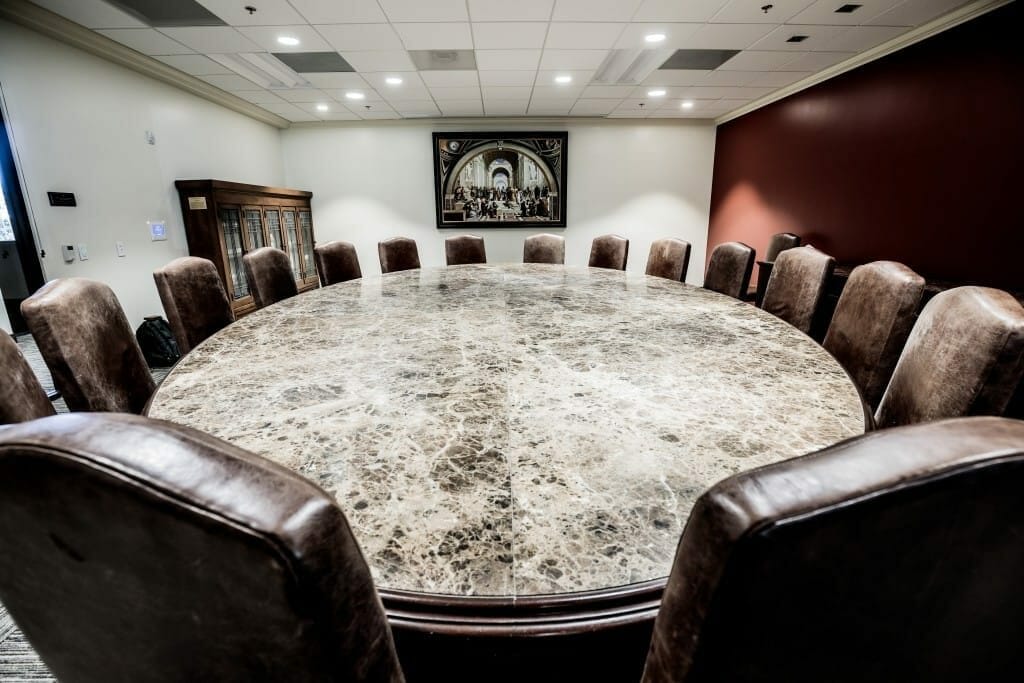
The Great Books Room at Payson Library. Image property of Pepperdine University.
What we’ve done throughout is open up rooms that have traditionally been closed, so that the message that this is a place for discussion, learning, and social engagement radiates outside these walls.
And because we are situated in Malibu on a hill overlooking the Pacific Ocean, with these beautiful views to the west, we have tried to leverage that as much as possible, opening up the space of the library: Remove as many walls as possible, create more usable and beautiful space—a more light-filled space. There is tremendous amount of natural light throughout the year. So we wanted that light and openness throughout the library. (This also helped us replace our infrastructure with more energy-efficient options.)
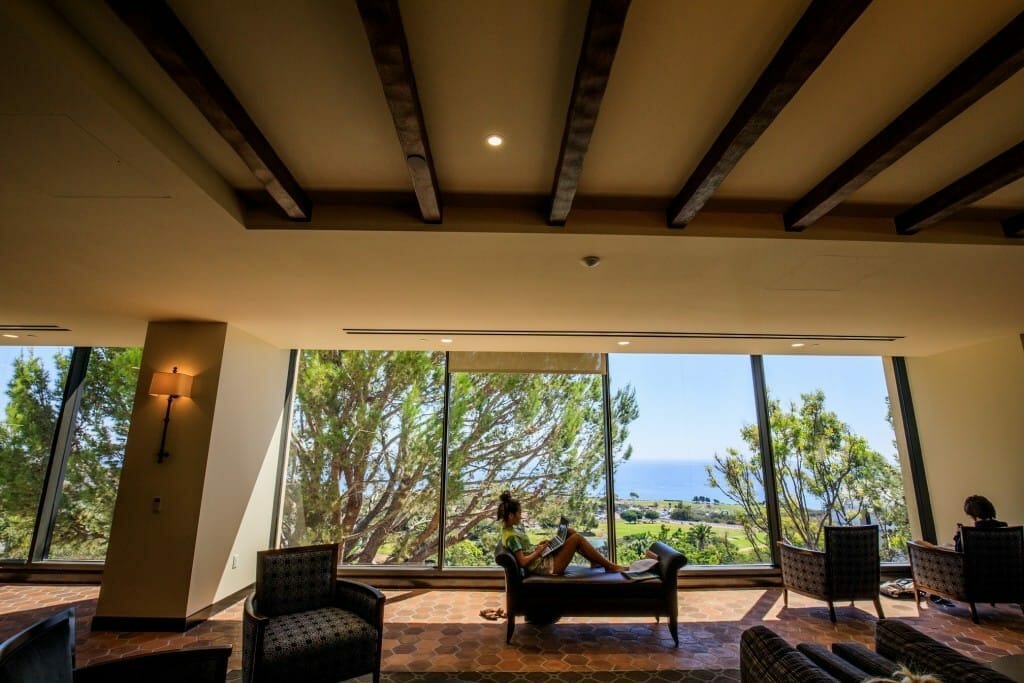
Open, light-filled space at Payson Library.
Daniel Fusch: Were there options you considered but decided not to do, and why?
Mark Roosa: Yes. We played with a lot of ideas at the beginning, during our “blue sky” planning when we were trying to just imagine the possibilities. You learn that some things are possible, and some aren’t. We had initially thought about using the floor below the library to house all of the collections except for a selection (20-25% would be upstairs).
But as we began thinking about the longer-term goals for the university, we realized the institution needed desperately to find office space for our international studies faculty, who until now had been officing in temporary buildings. So when we thought about the institution’s goal of growing the International Studies and Language Division and how the academic library could support that priority, we decided to annex the lower floor for offices and classroom space for that growing school, and move less critical collections offsite.
This means that we have faculty partners right here in the building, using the library—their students, too. And we have this partnership and relationship developing with that college.
Daniel Fusch: It’ll be exciting to see what projects come out of that partnership.
Mark Roosa: Absolutely.
Daniel Fusch: Thanks, Mark, for sharing the story of Payson Library with us. We’re excited to get an even closer look in March!


